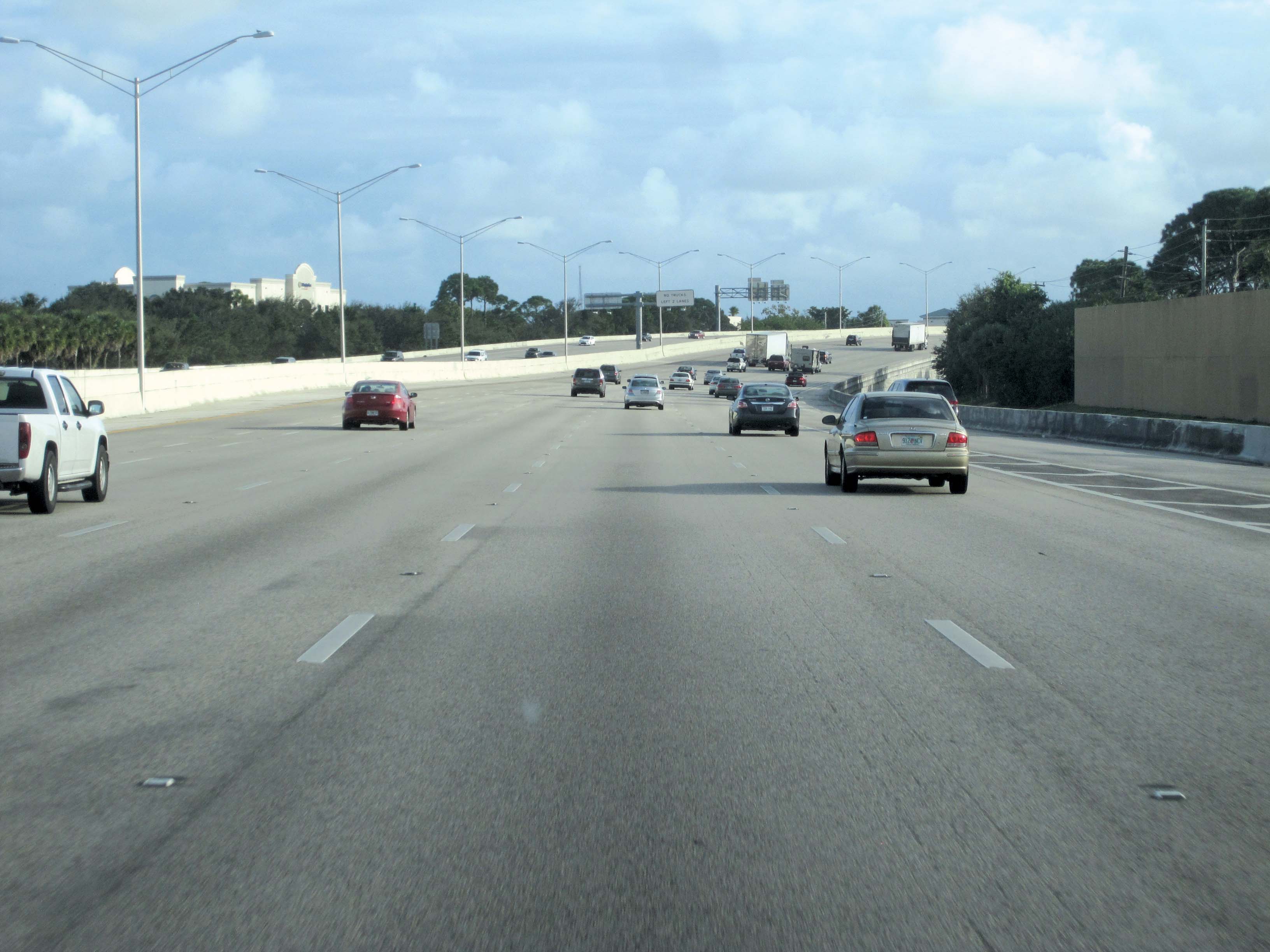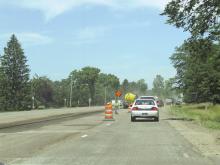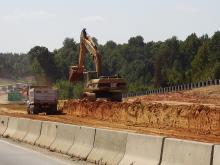US roads and bridges are crumbling at an alarming rate as state governments wring their hands over the increasingly scarce money for repairs. Enter the FAST Act. But is it enough? US state transportation department officials, as well as highway contractors and operators, breathed a sigh of relief in December. For months the highways infrastructure sector waited anxiously to see where the necessary money for road projects would come from. For several years, the Highways Trust Fund – the usual way of paying f

Florida is one state in the US relying on tolled highways
US roads and bridges are crumbling at an alarming rate as state governments wring their hands over the increasingly scarce money for repairs. Enter the FAST Act. But is it enough?
US state transportation department officials, as well as highway contractors and operators, breathed a sigh of relief in December. For months the highways infrastructure sector waited anxiously to see where the necessary money for road projects would come from.
For several years, the Highways Trust Fund – the usual way of paying for national highways – has been facing financial insolvency, a situation staved off by a series of kneejerk federal government bailout packages. With only hours to go before the expiry of the latest federal bailout, President Barack Obama signed into law the Fixing America’s Surface Transportation (FAST) Act.
FAST formally reauthorises the collection of the 18.4 cents per gallon gas tax that goes toward paying for transportation infrastructure projects. Politicians at state and federal level continue to resist increasing the tax amount that drivers pay at the gasoline pump.
But the five-year, $305 billion FAST Act also sets out spending of around $205 billion on highways and $48 billion on transit projects. According to the National Asphalt Pavement Association (NAPA), annual federal highway investment will increase by 15.1% from the current $40.3 billion to $46.4 billion by the end of 2020.
The federal government spends about $50 billion annually on transportation projects. But gas tax revenue is only around $34 billion a year. The FAST Act uses a variety of one-off cost savings and non-transportation resources to supplement Trust Fund revenue. Importantly, the FAST Act also includes $70 billion in so-called “pay-fors” to fill that $16 billion gap.
US Transportation Secretary Anthony Foxx hailed the long-awaited FAST Act as a step in the right direction. "After 36 extensions, hundreds of congressional meetings, two bus tours, visits to 43 states and so much uncertainty, it has been a long and bumpy ride to a long-term transportation bill," he said.
"It's not perfect and there is still more left to do, but it reflects a bipartisan compromise I always knew was possible."
But, as the Washington, D.C.-based American Road & Transportation Builders Association suggested, what happens next is more important. Admittedly, the act provides a reporting process that will provide more transparency and accountability, said Peter Ruane, president of ARTBA. "Highway users will now be able to know how and where their federal fuels taxes are being invested in their community. And it creates the programme framework to finally start modernising our National Highway Freight Network [major trucking roads]."
But, said Ruane, even as the ink dries on the FAST Act, crunch time looms on the horizon. "In four years, state transportation departments will again be staring at a looming funding abyss. At best, we will be treading water," he said.
Kevin Kelly, incoming chairman of the National Asphalt Pavement Association (NAPA), agreed with Ruane. Kelly told US media that the act gives many departments of transport the confidence to roll on with essential infrastructure projects, both new and renovation work.
“Congress did miss a chance to address the structural problem of how we fund infrastructure construction and maintenance,” said Kelly who is also president of Indiana-based contractor Walsh & Kelly. “That is an issue we will have to address, and the sooner the better. But for now, I am very happy to put people to work improving the performance and drivability of Indiana’s roads.”
“If this were to happen, at best there would be a major reduction in states’ flexibility to manage their highway programmes,” he told media. “At worst, it could lead to cuts in federal funding for vital projects all over the country for that year.”
In fact, five years is not a long time in the life of a highway. Despite the act, there must be an immediate major rethink of the “users pay” myth, according to a report in May by the international tax consultancy Frontier Group and consumer analysts US Pirg Education Fund.
“Many Americans believe that drivers pay the full cost of the roads they use through gas taxes and other user fees,” the report said. “That has never been true and it is less true now than at any other point in modern times.”
The problem is that the purchasing power of gasoline taxes has declined as a result of inflation. Vehicles are using less gas because they are more fuel-efficient. Also, Americans are, the report said, driving less and using other modes of transport – bicycle, rail, buses and even more walking. Their increasing infrastructure needs –cycle paths, train stations, bus terminals - also demand a share of the gasoline tax revenue.
Departments of transport must “treat revenue sources and investment decisions as separate”, according to the report. “Transportation agencies have often prioritised new highways of dubious merit over pressing maintenance and repair projects, as well as important investments in transit and other modes of transportation. By subjecting all transportation spending to rigorous evaluation and prioritisation - regardless of the source of revenue - public officials can ensure that taxpayer money is spent most effectively.”
A more “sensible pricing system for transportation”, the report continues. Taxes on drivers have been seen primarily as a way to raise money for transportation. But they can fill a more important purpose by offsetting some of the costs that driving a vehicle imposes on society and to improve the efficiency of the transportation system in general. “Congestion pricing, parking pricing, pollution-based charges and similar charges can encourage transportation choices that deliver the greatest benefits to, or impose the least costs on, society - even if every penny of revenue from those fees is returned to taxpayers or used for purposes other than transportation.”
Although welcomed, the FAST Act has, at best, given only a breathing space for the public and private sectors to consider how to move forward, albeit five years from now.
Stephen Sandherr, chief executive of the Associated General Contractors of America, summed it up: “Identifying a new way to pay for highway and transit upgrades is crucial if we want to avoid the temporary extensions and patchwork funding provisions that preceded this bill [FAST Act]. Ultimately, we want to make sure that the sequel to this bill fully funds our highway and transit programme for generations to come."
Running on empty
Since starting to build Interstate Highways in 1956, the federal Highway Trust Fund has been supported by revenue collected from road users, especially gas taxes and road tolls. This pay-as-you-go system has allowed states to plan, construct and improve roads. However, for the past five years, user-based revenue has fallen far short of what is needed. Specifically, the 18.4 cents per gallon federal gas tax has remained unchanged and not even been adjusted for inflation since 1993. The Highway Trust Fund has been taking in less money than it is spending even as far back as 2008. At the time, Congress authorised an $8 billion cash infusion from the Treasury’s general fund. By the end of 2014, a total of $54 billion, including $18.8 billion authorised by Congress in 2012, had been transferred from the general fund to the highway fund to maintain its solvency. But this was barely enough.
US state transportation department officials, as well as highway contractors and operators, breathed a sigh of relief in December. For months the highways infrastructure sector waited anxiously to see where the necessary money for road projects would come from.
For several years, the Highways Trust Fund – the usual way of paying for national highways – has been facing financial insolvency, a situation staved off by a series of kneejerk federal government bailout packages. With only hours to go before the expiry of the latest federal bailout, President Barack Obama signed into law the Fixing America’s Surface Transportation (FAST) Act.
FAST formally reauthorises the collection of the 18.4 cents per gallon gas tax that goes toward paying for transportation infrastructure projects. Politicians at state and federal level continue to resist increasing the tax amount that drivers pay at the gasoline pump.
But the five-year, $305 billion FAST Act also sets out spending of around $205 billion on highways and $48 billion on transit projects. According to the National Asphalt Pavement Association (NAPA), annual federal highway investment will increase by 15.1% from the current $40.3 billion to $46.4 billion by the end of 2020.
The federal government spends about $50 billion annually on transportation projects. But gas tax revenue is only around $34 billion a year. The FAST Act uses a variety of one-off cost savings and non-transportation resources to supplement Trust Fund revenue. Importantly, the FAST Act also includes $70 billion in so-called “pay-fors” to fill that $16 billion gap.
US Transportation Secretary Anthony Foxx hailed the long-awaited FAST Act as a step in the right direction. "After 36 extensions, hundreds of congressional meetings, two bus tours, visits to 43 states and so much uncertainty, it has been a long and bumpy ride to a long-term transportation bill," he said.
"It's not perfect and there is still more left to do, but it reflects a bipartisan compromise I always knew was possible."
Thanks, but…
Asphalt and cement suppliers were among those who welcomed the FAST Act. “FAST represents an average addition of 835,000tonnes annually to the cement industry,” said Edward Sullivan, chief economist and group vice-president at Portland Cement Association. “Smaller increases occur in the near term (370,000tonnes for 2016) and larger net increases occur in the out years of the forecast horizon (1.4 million tonnes for 2020).”But, as the Washington, D.C.-based American Road & Transportation Builders Association suggested, what happens next is more important. Admittedly, the act provides a reporting process that will provide more transparency and accountability, said Peter Ruane, president of ARTBA. "Highway users will now be able to know how and where their federal fuels taxes are being invested in their community. And it creates the programme framework to finally start modernising our National Highway Freight Network [major trucking roads]."
But, said Ruane, even as the ink dries on the FAST Act, crunch time looms on the horizon. "In four years, state transportation departments will again be staring at a looming funding abyss. At best, we will be treading water," he said.
Kevin Kelly, incoming chairman of the National Asphalt Pavement Association (NAPA), agreed with Ruane. Kelly told US media that the act gives many departments of transport the confidence to roll on with essential infrastructure projects, both new and renovation work.
“Congress did miss a chance to address the structural problem of how we fund infrastructure construction and maintenance,” said Kelly who is also president of Indiana-based contractor Walsh & Kelly. “That is an issue we will have to address, and the sooner the better. But for now, I am very happy to put people to work improving the performance and drivability of Indiana’s roads.”
So what happens at the end of 2020?
An analysis by AASHTO - American Association of State Highway and Transportation Officials – noted that the act will provide a funding increase of around 5% during year one and then 2% annually. However, departments of transport will have to tackle funding cuts in the last year of the act, according to Joung Lee, AASHTO policy director.“If this were to happen, at best there would be a major reduction in states’ flexibility to manage their highway programmes,” he told media. “At worst, it could lead to cuts in federal funding for vital projects all over the country for that year.”
In fact, five years is not a long time in the life of a highway. Despite the act, there must be an immediate major rethink of the “users pay” myth, according to a report in May by the international tax consultancy Frontier Group and consumer analysts US Pirg Education Fund.
“Many Americans believe that drivers pay the full cost of the roads they use through gas taxes and other user fees,” the report said. “That has never been true and it is less true now than at any other point in modern times.”
The problem is that the purchasing power of gasoline taxes has declined as a result of inflation. Vehicles are using less gas because they are more fuel-efficient. Also, Americans are, the report said, driving less and using other modes of transport – bicycle, rail, buses and even more walking. Their increasing infrastructure needs –cycle paths, train stations, bus terminals - also demand a share of the gasoline tax revenue.
Departments of transport must “treat revenue sources and investment decisions as separate”, according to the report. “Transportation agencies have often prioritised new highways of dubious merit over pressing maintenance and repair projects, as well as important investments in transit and other modes of transportation. By subjecting all transportation spending to rigorous evaluation and prioritisation - regardless of the source of revenue - public officials can ensure that taxpayer money is spent most effectively.”
A more “sensible pricing system for transportation”, the report continues. Taxes on drivers have been seen primarily as a way to raise money for transportation. But they can fill a more important purpose by offsetting some of the costs that driving a vehicle imposes on society and to improve the efficiency of the transportation system in general. “Congestion pricing, parking pricing, pollution-based charges and similar charges can encourage transportation choices that deliver the greatest benefits to, or impose the least costs on, society - even if every penny of revenue from those fees is returned to taxpayers or used for purposes other than transportation.”
Although welcomed, the FAST Act has, at best, given only a breathing space for the public and private sectors to consider how to move forward, albeit five years from now.
Stephen Sandherr, chief executive of the Associated General Contractors of America, summed it up: “Identifying a new way to pay for highway and transit upgrades is crucial if we want to avoid the temporary extensions and patchwork funding provisions that preceded this bill [FAST Act]. Ultimately, we want to make sure that the sequel to this bill fully funds our highway and transit programme for generations to come."
Running on empty
Since starting to build Interstate Highways in 1956, the federal Highway Trust Fund has been supported by revenue collected from road users, especially gas taxes and road tolls. This pay-as-you-go system has allowed states to plan, construct and improve roads. However, for the past five years, user-based revenue has fallen far short of what is needed. Specifically, the 18.4 cents per gallon federal gas tax has remained unchanged and not even been adjusted for inflation since 1993. The Highway Trust Fund has been taking in less money than it is spending even as far back as 2008. At the time, Congress authorised an $8 billion cash infusion from the Treasury’s general fund. By the end of 2014, a total of $54 billion, including $18.8 billion authorised by Congress in 2012, had been transferred from the general fund to the highway fund to maintain its solvency. But this was barely enough.






